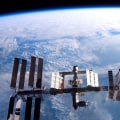The 1967 Outer Space Treaty prohibits the placement of weapons of mass destruction (WMD) in outer space, prohibits military activities in celestial bodies, and details legally binding rules governing the peaceful exploration and use of space. The treaty came into force in October. Taking into account United Nations General Assembly resolution 110 (II) of 3 November 1947, which condemned propaganda designed or which could provoke or encourage any threat to the peace, breach of the peace or act of aggression, and considering that the above-mentioned resolution applies to outer space,. On June 19, the Russian government called on the United States to stop considering the deployment of space weapons linked to missile defense.
States Parties to the Treaty shall immediately inform the other States Parties to the Treaty or the Secretary-General of the United Nations of any phenomenon they discover in outer space, including the Moon and other celestial bodies, which may constitute a danger to the life or health of astronauts. In addition, countries need to ensure that any space material they bring to Earth does not harm the planet. Soviet plans for general and complete disarmament between 1960 and 1962 included provisions to ensure the peaceful use of outer space. States Parties to the Treaty shall assume international responsibility for national activities in outer space, including the Moon and other celestial bodies, whether such activities are carried out by governmental agencies or non-governmental entities, and for ensuring that national activities are carried out carried out in accordance with the provisions of this Treaty.
Under the terms of the treaty, the parties are prohibited from placing nuclear weapons or other weapons of mass destruction in orbit, on the Moon or on other bodies in space. Discussions included lunar water, potential fuel and the legality of any mining operation under the Outer Space Treaty. On the contrary, scientists didn't know if there was extraterrestrial life on the Moon or elsewhere, and they didn't want to risk space agencies bringing back a deadly space microbe that had never been seen before. It also has rules on how to handle space samples brought back to Earth, to ensure that nothing dangerous spreads.
The US ambassador, on the other hand, made some statements stressing that the United States “did not believe that outer space issues were ripe for negotiations, since, according to the United States, there is no “arms race in outer space”. The States Parties to the Treaty undertake not to place in orbit around the Earth any object carrying nuclear weapons or any other type of weapons of mass destruction, to install such weapons in celestial bodies, or to park such weapons in outer space in any other way. His successive plans for general and complete disarmament included provisions to prohibit the orbit and deployment in outer space of weapons of mass destruction. Delegates expressed the view that there was a gap in the current legal regime governing outer space with respect to the possible introduction of weapons into outer space, and therefore its objective is to eliminate the deficiency and strengthen the current legal regime to ensure security and transparency.
in carrying out space activities. Nations are responsible for their activities in space, are responsible for any damage caused by objects thrown into space from their territory, and are intended to help astronauts in distress. However, most countries seek to adhere to the guidelines established by the Committee on Space Research, or COSPAR. .



